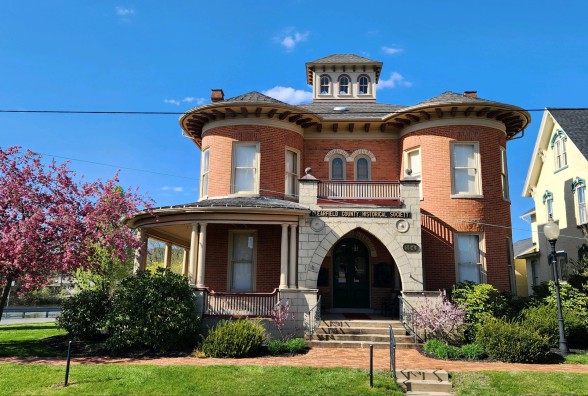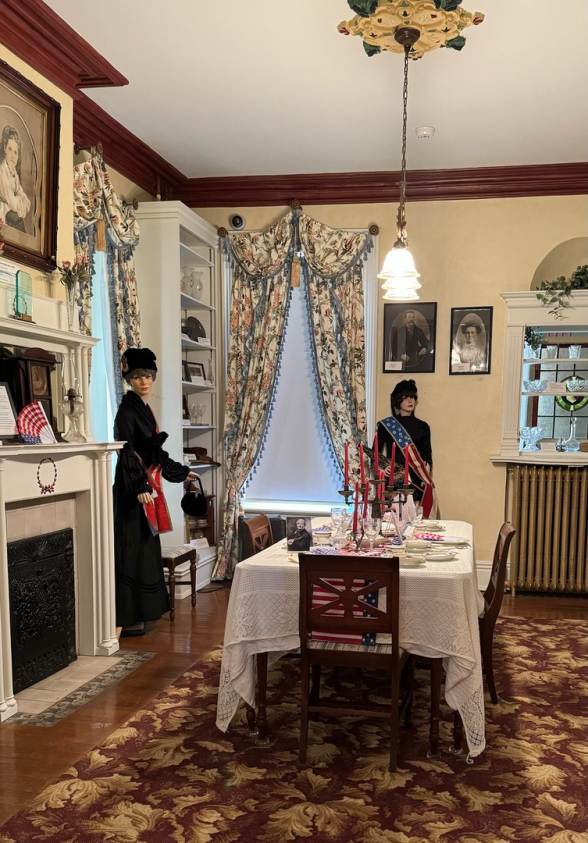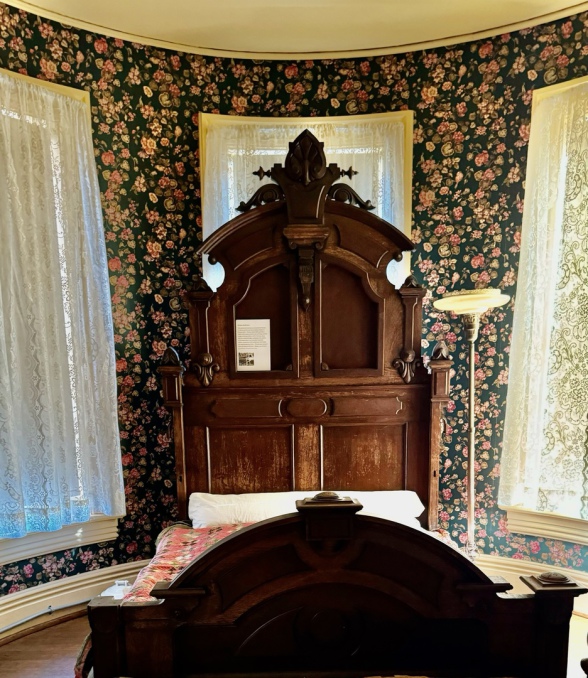Welcome...
Clearfield County Historical Society
open to browse & tour
each Sunday & Thursday afternoon
from 1:30 to 4:30 PM.
The Kerr House museum is located at the intersection of Pine and North Front streets in Clearfield.
This year, visitors can stroll through the three-story majestic Victorian era museum to view new pieces of history that are on display. The dining room has been transformed to what the room may have looked like when William Jennings Bryan made a visit to Clearfield and stayed overnight at the James and Julia Kerr residence, the very same house that serves as the county museum. William Jennings Bryan ran for the seat of United States President three times. Although he was never elected, he was a leading political figure of the times.
On exhibit in the parlor is a newly acquired painting by the late William Patton Brown, 1904-1980, well-known Ringling Brothers Circus artist. The famous circus capitalized on Brown’s talent by sending him to an art illustration school where he became proficient in making signs, posters, banners and backdrops for the circus. He continued work for Ringling Brothers until the late 1930’s. Brown moved home to Clearfield where he continued painting for the joy of art as well as advertising work for local businesses. The William Patton Brown painting on display depicts the 1954 Sesquicentennial raft on the Susquehanna River. That celebration took place 70 years ago this summer.
Upstairs, in the museum’s master bedroom, a newly acquired bed is on display from the McGees Mills area. This solid wood bed frame has an 8-foot high head board. This spectacular bed was constructed by Thomas A. McGee and his son Henry Holmes McGee of McGees Mills. Thomas (1816-1892) and Henry (1844-1929) constructed the last surviving covered bridge in McGees Mills in 1873. This bed, along with the covered bridge, symbolizes the creation of the beginnings of our beautiful Clearfield County, carved out of the wilderness that helped our nation grow and thrive. This bed was removed from the home of Charles C. McGee, son of Henry.
The Kerr House Museum has three full floors of Clearfield County-related items on display. Located directly behind the museum is the Carriage House which also houses treasures from the past.
The Kerr House Museum is open free of charge each Thursday and Sunday from 1:30-4:30 p.m. through October. It is located at 104 E. Pine Street.
click > to ....take a PREVIEW TOUR !
Friendly Hosts will be on hand to answer all inquiries !










